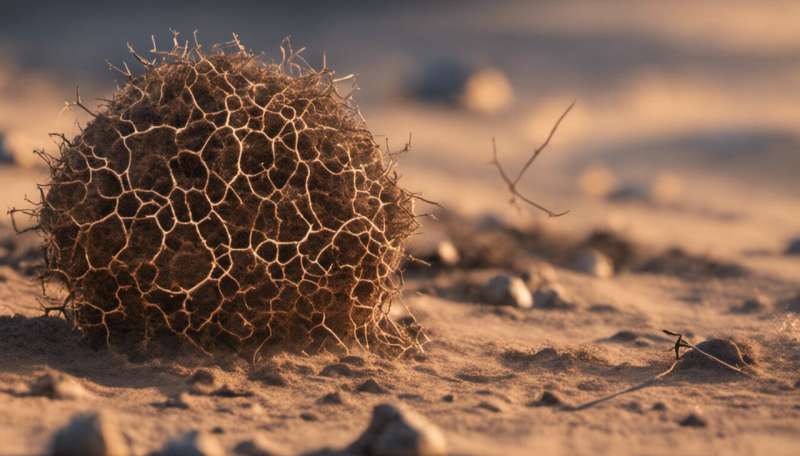New research investigates how soil changes the danger of a buried IED

What happens when a bomb explodes? A lot of testing has been done over the years to answer that question about huge bombs, but there is much less understanding when it comes to small bombs—especially when they are buried.
This is despite the fact that improvised explosive devices, or IEDs, kill and maim about 17,000 people each year, and over the last decade, 273 British service personnel have been killed in Iraq and Afghanistan by enemy forces using these bombs.
To gain a better understanding of what happens when an IED explodes, we set up our own unique "blast lab" and we've discovered that the soil IEDs are buried in is almost as important as what the explosive is made from.
Our earlier research on buried explosives suggested that different soil conditions could make a massive difference to the intensity of the blast pressure generated during a detonation. It also affects how that destructive impulse gets directed.
This matters because every soil is different. The soil at your local park is different to that found nearer the north pole or in the Sahara. In the past, it was hard to know precisely what effect the soil density and moisture had. In our lab, we learned how to control the soil conditions and how to produce repeatable explosions. But we had no way to map the pressure and impulse from a buried explosion and relate it to the soil parameters until we created a unique piece of testing apparatus to do exactly this.
Our device comprises a large metal disc loaded with steel bars that can measure extremely high magnitudes of pressures. These bars act as high-speed force sensors and record the pressures at points above a buried explosive to capture the variations in loading and shape caused by changes in the soil. We called our system the characterisation of blast loading apparatus, or CoBL for short.
Informing vehicle design
This allowed us to quantify how an explosive interacts with its immediate confining materials and structures. This information is very useful as it can be used to develop methods for reducing the impact generated from explosives through the intelligent application of materials. And this can inform the design of new military vehicles.
Our soil experiments involved detonating explosives buried in a soil bin at known depths and positions. The soil was carefully characterized—so we knew its density, particle-size range and moisture content. When the explosive was detonated, high-speed cameras filmed the test. The footage told us when the detonation products (gas released from the explosion) and soil were ejected from the explosion and reached our mock target.
The camera footage and pressure data together allowed us to work out how much impulse comes from the explosive itself and how much comes from the soil. We could also see how this changes at different positions across the target face and from this we produced a map of the pressure and impulse that can be used by future vehicle designers.
We found that the detonation products were more easily able to force their way through dry soil. The ejected soil and explosive gases hit the target at a similar time. And the blast loading is focused right above the explosive location and can punch through some military vehicles' armor systems.
But when the soil is wet, everything changes and can become more dangerous to some military vehicle types. The explosive gases get trapped in the soil and an expanding ring of high pressure wipes across the target, increasing the load generated. The impulse becomes more even across the area, but the timing of the loading varies.
In simple terms, this means that wet soil spreads the explosion and so makes the bomb more effective at throwing a vehicle in the air. The information our lab has discovered can now be used for route planning in IED zones to help reduce the risk to vehicles.
It has also changed the way vehicle designers think about the danger of buried IEDs. They can now consider a range of different conditions for the soil and look at how that changes the pressure loads they have to design against. With our experiments, they now have the information they need to decide which are the most serious threats their vehicles face and how to best protect against them.
This article is republished from The Conversation under a Creative Commons license. Read the original article.![]()



















